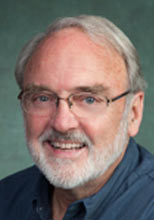Вообще рекомендую блог, но по-англ (не для скрепанутых, но их и.нет),
там попо дробнее
Many scientific disciplines routinely use scientific notation when dealing with very large or very small numbers. Quantities are expressed as a number between 1 and 10 [the coefficient] times a power of 10. For example, the speed of light in a vacuum is estimated at 299,792,498 meters per second. In scientific notation, this would be approximately 3.0 x 108. This abbreviated or shorthand form of the original number is easier to remember and to say or write. It also makes it easier to keep track of zeros or decimal places in calculations.
Although not to the same extent as physics or astronomy, demography also involves relatively large and small numbers [for example, world population [7,800,000,000], or the probability of death of a 10-year-old female in a low-mortality population [0.00068], but the use of scientific notation in the demography is rare.
Of the more recent origin and less widely used is engineering notation. This is analogous to scientific notation but allows coefficients between 1 and 1,000 and limits exponents to multiples of 3. The exponents correspond to familiar metrics such as thousands, millions, billions, etc. for large numbers, and thousandths, millionths, billionths, etc. for small numbers. In engineering notation, for example, the speed of light [299,792,498] would be 229.8 x 106. The exponent 6 indicates millions; coefficient 229.8 gives the number.
там попо дробнее
Many scientific disciplines routinely use scientific notation when dealing with very large or very small numbers. Quantities are expressed as a number between 1 and 10 [the coefficient] times a power of 10. For example, the speed of light in a vacuum is estimated at 299,792,498 meters per second. In scientific notation, this would be approximately 3.0 x 108. This abbreviated or shorthand form of the original number is easier to remember and to say or write. It also makes it easier to keep track of zeros or decimal places in calculations.
Although not to the same extent as physics or astronomy, demography also involves relatively large and small numbers [for example, world population [7,800,000,000], or the probability of death of a 10-year-old female in a low-mortality population [0.00068], but the use of scientific notation in the demography is rare.
Of the more recent origin and less widely used is engineering notation. This is analogous to scientific notation but allows coefficients between 1 and 1,000 and limits exponents to multiples of 3. The exponents correspond to familiar metrics such as thousands, millions, billions, etc. for large numbers, and thousandths, millionths, billionths, etc. for small numbers. In engineering notation, for example, the speed of light [299,792,498] would be 229.8 x 106. The exponent 6 indicates millions; coefficient 229.8 gives the number.
A closer look at these two ways of abbreviating numbers suggests engineering notation may be the more useful tool for demography.
Про автора:
Thomas K. Burch is an Adjunct Professor, Dept. of Sociology, University of Victoria [Canada] and a Regional Associate, Center for Studies in Demography and Ecology, University of Washington. He is Professor Emeritus, Western University, London, Ont., where he served from 1975 to 2000, working to develop a Ph.D. program in social demography. Before joining the faculty at Western, he taught at Marquette Univ., Milwaukee, Wisc. And Georgetown University, Washington, D.C. He has been a visiting professor at the Univ. of California, Berkeley, and at the Univ. of Rome, and a guest researcher at the Max Planck Institute for Demographic Research, Rostock, Germany. From 1970 to 1975 he was Associate Director, Demographic Division, The Population Council, New York, NY.
His main areas of research and publication are fertility, marriage and divorce, and household and family. Late in his career, he focused on a methodological assessment of demography as a science, with particular attention to theory and models. A recent summary of this work is Model-Based Demography: Essays on Integrating Data, Technique and Theory, Max Planck Institute for Demographic Research and Springer Open, 1918 [open access]. In a first-year university course in organic chemistry, the author used a slide rule for all calculations. As a graduate student in the late 1950s, he used mechanical calculators that would add, subtract, multiply and divide – only – with no tapes or printouts. Calculations involving logarithms, exponentials or roots required consulting large reference books of tables. The computer revolutionized demographic calculation.


No comments:
Post a Comment